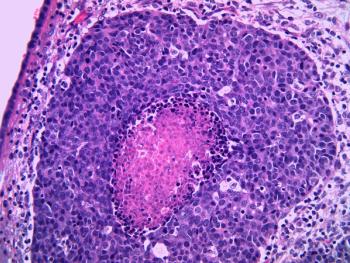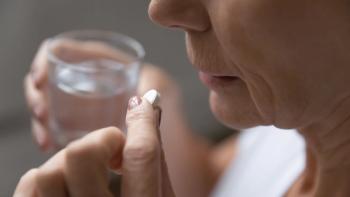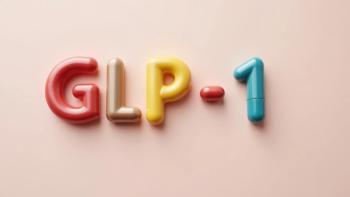
Front-Line Clinicians Investigate COVID-19 Treatments
Here is an overview of reported investigations of existing medications.
Coronavirus disease 2019 (COVID-19) infection, caused by severe acute respiratory syndrome coronavirus 2 (SARS-CoV-2), has resulted in the most serious public health crisis of the 21st century.
As of March 25, 2020, globally, there were 468,523 confirmed cases and 21,191 deaths, according to John’s Hopkins University.1
The COVID-19 infection has spread throughout the world, and the impact on global economies and population health has been substantial.
Since early January 2020, many case reports of treatment for COVID-19 have been published. However, there are no high-quality, randomized control trial or meta-analysis data reported. The CDC, FDA, and World health Organization (WHO) agree that there is no approved treatment for COVID-19 infection.2,3
In light of this, many front-line clinicians have been investigating existing medications and repurposing them for COVID-19 treatment (see Table 1). This has resulted in case reports for repurposed medications that suggest some treatments helped or may have cured some patients.4,5 Although promising, these reports do not take the place of well-designed, double-blind, randomized control trials. Although these case reports can serve as a guidepost, they cannot be used to exclusively to establish treatment protocols.
There have been numerous reports from various sources regarding the use of Eastern medicine, natural herbs, vitamins, and other alternative medicines to treat COVID-19 symptoms or boost the immune system. This information is not included in this article.
On March 21, 2020, the CDC updated its “Information for Clinicians on Therapeutic Options for COVID-19 Patients.” In this document, the CDC listed chloroquine, hydroxychloroquine, and remdesivir and as investigational treatments.
Lopinavir-ritonavir was mentioned as well, but the existing data did not seem promising, according to the CDC.6
Since all reported COVID-19 treatments are considered investigational by the FDA and the World Health Organization, their efficacy and safety have not been fully tested. Also, all medications mentioned have potential adverse effects on patients.
It is crucial that all treatments must be evaluated on a case-by-case basis by the treatment team. WHO stated, “Use of investigational anti-COVID-19 therapeutics should be done under ethically approved, randomized, controlled trials.”
This disease is fast-spreading, and new evidence is emerging every day, so regular review and update of evidence is crucial for patient safety and public health. The following are the findings for each investigational treatment option for COVID-19, as well as their potential for drug interactions.
The FDA approved chloroquine and hydroxychloroquine for Lupus erythematosus, malaria, and rheumatoid arthritis. Chloroquine has broad-spectrum activities against both DNA and RNA viruses in vitro. It increases endosomal pH of the phagolysosome, thus interfering with the virus and cell fusion. It also interferes with ACE2 glycosylation of the CARS-CoV cellular receptors.7,8 Hydroxychloroquine is the prodrug of chloroquine, so they will be evaluated together.
The General Office of National Health Commission and State Administration of Traditional Chinese Medicine of China released the Diagnosis and Treatment Protocol for Novel Coronavirus Pneumonia (Trial Version 7) on March 3, 2020. This is an update from A rapid advice guideline for the diagnosis and treatment of 2019 novel coronavirus (2019-nCoV) infected pneumonia (standard version) that was published in early February. They suggested giving COVID-19 patients chloroquine phosphate 500 mg twice a day for 7 days for patients between 18 and 56 years of age who weigh >50Kg and 500 mg twice a day for days 1 and 2 and then 500 mg once a day for days 3 to 7 for adults who weigh < 50Kg (4).
The majority of the significant toxicities of chloroquine are associated with long-term use. However, QT prolongation has been reported for short-term use, with fatality. The risk is dose-dependent and will also increase with concomitant use of other QT prolongation medications.9
Chloroquine and hydroxychloroquine are the most reported antiviral treatments for COVID-19 (Multicenter). Gao, Tian, and Yang10 reported on 15 clinical trials conducted in the People’s Republic of China, which involved 10 hospitals in several major Chinese cities. More than 100 patients were enrolled in these trials. Results from the preliminary reports showed that chloroquine and hydroxychloroquine were superior compared with the control treatment of COVID-19 infection. No major adverse effects were reported, and no safety concerns were raised. Yao et al11 reported that hydroxychloroquine is more effective in vitro than chloroquine in inhibiting SARS-CoV-2 growth.
However, like all other reported treatments for COVID-19 infection, there are no FDA-approved indications for COVID-19 treatment. High-quality evidence from returns to clinics are lacking. Cortegiani et al performed a review of 6 published articles and 23 ongoing clinical trials. They cautioned that clinical use must be guided by the principles of Monitored Emergency Use of Unregistered Interventions.12
There are 3 ongoing clinical trials reported by the US National Library of Medicine, which are investigating the efficacy and safety of chloroquine for treatment of the SARS-CoV-2 infection. One is actively recruiting enrollees. Chloroquine is given, 500 mg once a day, in combination with 3 other antiviral medications: darunavir, oseltamivir, and ritonavir. Two more new studies are under way, but they have not started recruiting yet. The most studied dosage and frequency for hydroxychloroquine is 400 mg twice daily for 1 day, followed by 200 mg given twice daily for 4 days.8,13
Remdesivir is a broad-spectrum antiviral medication developed against RNA viruses for the treatment of Ebola infection. It is designed to prematurely terminate the viral RNA transcription. Animal models indicated that Remdesivir can reduce the clinical signs of COVID-19 infection, as well as decrease viral replication and lung lesions.14 Remdesivir is a pro-drug, which needs CYP3A4 to convert it to its active form. Thus, if the patient is on a CYP3A4 inducer or inhibitor, drug interactions can be an issue. Elevated aminotransferase levels were reported in 3 hospitalized patients with laboratory confirmed COVID-19.4 Patients’ hepatic functions must be monitored closely, especially for patients who are on other hepatically cleared medications, for example, acetaminophen, which is commonly used for fever.
Remdesivir has been investigated for the treatment of COVID-19 infection in humans in multiple ongoing studies in China. Jin et al15 reported that 1 case of COVID-19 pneumonia responded very well to Remdesivir treatment. Baron et al16 reported that Remdesivir, as well as Chloroquine, Lopinavir, Ribavirin, and Ritonavir, all showed efficacy against coronavirus in vitro.
Multiple studies are under way to evaluate the efficacy and safety of Remdesivir in the treatment of COVID-19 infection. There are 4 clinical trials evaluating the role of remdesivir in the treatment of COVID-19 infection. The commonly used adult dose in these studies is 200 mg intravenously once on day 1, then 100 mg IV daily. The duration of therapy is 10 days for 2 studies. The other 2 studies are parallel assignment studies with 5 days in one treatment arm and 10 days in the other. No results were reported at this time. The earliest preliminary completion date is May 2020.17
Lopinavir-ritonavir (Kelatra) is a combination of 2 antiretroviral medications indicated for HIV infection. Lopinavir is a protease inhibitor, which prevents the virus from reaching its mature state, thus preventing infection. It is metabolized by CYP3A enzymes in the liver. Thus, a CYP 3A inhibitor, ritonavir, is added to this combination drug to decrease metabolism and increase drug bioavailability for lopinavir.18 Because this combo is so involved with the CYP3A enzyme system, a drug-drug interaction is expected. It is necessary to closely monitor patients who are on other CYP3A4 substrates to prevent unintended toxicity. Lopinavir-ritonavir was reported to exhibit anti-SARS-Cov activities in 2004,19 so this combination drug has been studied for the treatment of SARS-Cov2.
The New England Journal of Medicine published a controlled, open-label, randomized, trial on March 20, 2020. The researchers investigated the effect of lopinavir-ritonavir on 199 COVID-19-infected patients. The treatment arm patients were given 400 mg/100 mg twice a day for 14 days, and 100 control arm patients received standard care.20
At baseline, there were no differences between the control and treatment groups in demographics and major lab results. However, the standard-care group had a higher percentage of cardiovascular disease (8% versus 5%) and diabetes (13% versus 10%) compared with the treatment group patients.
They found no benefit from lopinavir-ritonavir treatment compared with standard care in mortality, reducing viral RNA load, and time to clinical improvement. However, they reported shorter integrated urgent cares stays in the treatment group. Study limitations included that it was not double blind, and the treatment group had higher throat viral load at the beginning of the study. The researchers recommended further investigation of this and other medications in the treatment of COVID-19 infection.20
Twelve more clinical trials are actively investigating the anticovid-19 activities of lopinavir-ritonavir. Three are phase 3, and three are phase 4 trials. The earliest primary completion date is expected to be May 14, 2020. The most common dosage studied is lopinavir-ritonavir 400mg/100mg by mouth every 12 hours for 7 to 10 days.17,21
IL-6 receptor blocker tocilizumab was mentioned under immunotherapy in the Diagnosis and Treatment Protocol for Novel Coronavirus Pneumonia (trial version), but a PubMed search with search words “tocilizumab, COVID-19 and Coronavirus” yielded no articles. There is 1 open-label, parallel-assignment, randomized study investigating the efficacy and safety of tocilizumab in the treatment of COVID-19 in combination with favipiravir.22 The primary completion date is May 20, 2020.14 Another phase 2/3 trial to evaluate Sarilumab’s role in Covid-19 treatment.23 Fudan University in Shanghai, China, reported that human monoclonal antibodies can bind potently to the Covid-19 receptor-binding domain, so it may have potential to prevent infection.24
Many other treatment options have been reported, such as darunavir, favipiravir, oseltamivir, ritonavir, and multiple Chinese medicine products.25-28. IFN-α inhalation of 5 million units twice daily were reported to be effective in treating SARS-Cov in vitro in 2006. It is listed as a treatment option in the Diagnosis and Treatment Protocol for Novel Coronavirus Pneumonia (Trial Version 7).4,29
Conclusion
Overall, there is still no sufficient high-quality evidence to establish the efficacy and safety of any investigational medication as the treatment for COVID-19. However, there are more positive reports for the effectiveness of chloroquine and hydroxychloroquine. Lopinavir-ritonavir in combination and remdesivir need further investigation. Many clinicians and researchers are working day and night to find a cure for COVID-19, and new evidence is fast emerging, so regular review and update of evidence is crucial for patient safety and public health.
Table. Summary of Reported Investigational Treatments for Covid-19
Drug, With Special Notes
COVID-19
Investigational Dosage
Duration of Treatment
Commons
Remdesivir
200 mg intravenously (IV) once on day 1, then 100 mg IV daily
No more than 10 days
CYP3A4-dependent, watch for drug-drug interactions; elevated aminotransferase levels were reported in 3 hospitalized patients with laboratory confirmed COVID-19.
Lopinavir-ritonavir: strong CYP3A4 inhibitor, watch for drug-drug interactions
400 mg/100 mg Q12H
7 to 10 days
Multiple drug-drug interactions, such as
amiodarone, anticoagulants, anticonvulsants, antifungals, chemotherapeutic agents, cyclosporine, rifampin, sirolimus, and tacrolimus
Chloroquine phosphate
500 mg bid for 7 days for adults aged 18 to 65 years of age who weigh> 50 kg;
500 mg bid for days 1 and 2, and 500 mg once a day for days 3 to 7 for adults who weigh< 50 kg
No more than 7 days
QT prolongation, with fatalities, has been reported
Hydroxychloroquine
400 mg twice daily, once a day, followed by 200 mg given twice daily for 4 days
5 days
QT prolongation; do not give with other medications, which causes QT prolongation
Sophia Z. Humphreys, PharmD, MHA, is director of system pharmacy clinical services at Providence St. Joseph Health in Renton, Washington, and clinical assistant professor at the University of Washington School of Pharmacy in Seattle.
References
1. Johns Hopkins University and Medicine. Coronavirus resource center.
2. Chan KW, Wong VT, Tang SCW. COVID-19: an update on the epidemiological, clinical, preventive and therapeutic evidence and guidelines of integrative Chinese-Western medicine for the management of 2019 Novel Coronavirus Disease. Am J Chin Med. 2020;1-26. doi:10.1142/S0192415X20500378.
3. Lai CC, Shih TP, Ko WC, Tang HJ, Hsueh PR. Severe acute respiratory syndrome coronavirus 2 (SARS-CoV-2) and coronavirus disease-2019 (COVID-19): the epidemic and the challenges. Int J Antimicrob Agents. 2020;55(3):105924. doi:10.1016/j.ijantimicag.2020.105924.
4. Dong L, Hu S, Gao J. Discovering drugs to treat coronavirus disease 2019 (COVID-19). Drug Discov Ther. 2020;14(1):58-60. doi:10.5582/ddt.2020.01012.
5. Li H, Wang YM, Xu JY, Cao B. Zhonghua Jie He Hu Xi Za Zhi. 2020;43(0):E002. doi:10.3760/cma.j.issn.1001-0939.2020.0002.
6. CDC. Information for clinicians on therapeutic options for COVID-19 patients.
7. Devaux CA, Rolain JM, Colson P, Raoult D. New insights on the antiviral effects of chloroquine against coronavirus: what to expect for COVID-19? Int J Antimicrob Agents. 2020;105938. doi:10.1016/j.ijantimicag.2020.105938.
8. Colson P, Rolain JM, Raoult D. Chloroquine for the 2019 novel coronavirus SARS-CoV-2. Int J Antimicrob Agents. 2020;55(3):105923. doi: 10.1016/j.ijantimicag.2020.105923.
9. Powell SJ. The cardiotoxicity of systemic amebicides. A comparative electrocardiographic study. Am J Trop Med. 1967;16(4):447-450.
10. Multicenter Collaboration Group of Department of Science and Technology of Guangdong Province and Health Commission of Guangdong Province for Chloroquine in the Treatment of Novel Coronavirus Pneumonia. [Expert consensus on chloroquine phosphate for the treatment of novel coronavirus pneumonia]. Zhonghua Jie He Hu Xi Za Zhi. 2020;43(0):E019. doi: 10.3760/cma.j.issn.1001-0939.2020.0019.
10. Gao J, Tian Z, Yang X. Breakthrough: chloroquine phosphate has shown apparent efficacy in treatment of COVID-19 associated pneumonia in clinical studies. Biosci Trends. 2020;14(1):72-73. doi:10.5582/bst.2020.01047.
11. Yao X, Ye F, Zhang M, et al. In vitro antiviral activity and projection of optimized dosing design of hydroxychloroquine for the treatment of severe acute respiratory syndrome coronavirus 2 (SARS-CoV-2). Clin Infect Dis. 2020;pii:ciaa237. doi:10.1093/cid/ciaa237.
12. Cortegiani A, Ingoglia G, Ippolito M, Giarratano A, Einav S. A systematic review on the efficacy and safety of chloroquine for the treatment of COVID-19. J Crit Care. 2020;S0883-9441(20)30390-7. doi:10.1016/j.jcrc.2020.03.005.
13. Zhou D, Dai SM, Tong Q. COVID-19: a recommendation to examine the effect of hydroxychloroquine in preventing infection and progression. J Antimicrob Chemother. 2020;pii:dkaa114. doi:10.1093/jac/dkaa114.
14. de Wit E, Feldmann F, Cronin J, et al. Prophylactic and therapeutic remdesivir (GS-5734) treatment in the rhesus macaque model of MERS-CoV infection. Proc Natl Acad Sci U S A. 2020;117(12):6771-6776. doi: 10.1073/pnas.1922083117.
15. Jin YH, Cai L, Cheng ZX, et al. A rapid advice guideline for the diagnosis and treatment of 2019 novel coronavirus (2019-nCoV) infected pneumonia (standard version). Military Med Res. 2020;7(1):4. doi: 10.1186/s40779-020-0233-6.
16. Baron SA, Devaux C, Colson P, Raoult D, Rolain JM. Teicoplanin: an alternative drug for the treatment of coronavirus COVID-19? Int J Antimicrob Agents. 2020;105944. doi:10.1016/j.ijantimicag.2020.105944.
17. US National Library of Medicine. ClinialTrials.gov website.
18. Sham HL, Kempf DJ, Molla A, et al. ABT-378, a highly potent inhibitor of the human immunodeficiency virus protease. Antimicrob Agents Chemother. 1998;42(12):3218-3224.
19. Chu CM, Cheng VC, Hung IF, et al. Role of lopinavir/ritonavir in the treatment of SARS: initial virological and clinical findings. Thorax. 2004;59(3):252-256.
20. Cao B, Wang Y, Wen D, et al. A Trial of Lopinavir-Ritonavir in Adults Hospitalized with Severe Covid-19. N Engl J Med. 2020. doi: 10.1056/NEJMoa2001282.
21. US National Library of Medicine. Comparison of lopinavir/ritonavir or hydroxychloroquine in patients with mild coronavirus disease (COVID-19). ClinialTrials.gov website.
22. US National Library of Medicine. Favipiravir combined with tocilizumab in the treatment of corona virus disease 2019. ClinialTrials.gov website.
23. US National Library of Medicine. Evaluation of the Efficacy and Safety of Sarilumab in Hospitalized Patients With COVID-19. ClinialTrials.gov website.
24. Tian X, Li C, Huang A, et al. Potent binding of 2019 novel coronavirus spike protein by a SARS coronavirus-specific human monoclonal antibody. Emerg Microbes Infect. 2020;9(1):382-385. doi:10.1080/22221751.2020.1729069.
25. Lu H. Drug treatment options for the 2019-new coronavirus (2019-nCoV). Biosci Trends. 2020;14(1):69-71. doi:10.5582/bst.2020.01020.
26. Martinez MA. Compounds with therapeutic potential against novel respiratory 2019 coronavirus. Antimicrob Agents Chemother. 2020;pii:AAC.00399-20. doi:10.1128/AAC.00399-20.
27. Morse JS, Lalonde T, Xu S, Liu WR. Learning from the past: possible urgent prevention and treatment options for severe acute respiratory infections caused by 2019-nCoV. Chembiochem. 2020;21(5):730-738. doi:10.1002/cbic.202000047.
28. Song P, Karako T. COVID-19: Real-time dissemination of scientific information to fight a public health emergency of international concern. Biosci Trends. 2020;14(1):1-2. doi:10.5582/bst.2020.01056.
29. Du B, Qiu HB, Zhan X, et al. Pharmacotherapeutics for the new coronavirus pneumonia. Zhonghua Jie He Hu Xi Za Zhi. 2020;43(3):173-176. doi:10.3760/cma.j.issn.1001-0939.2020.03.005.
Newsletter
Stay informed on drug updates, treatment guidelines, and pharmacy practice trends—subscribe to Pharmacy Times for weekly clinical insights.

















































































































































































































